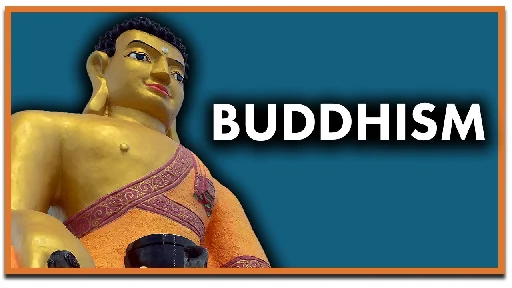Buddhism
- Gelong Thubten explains how to develop a daily mindfulness practice
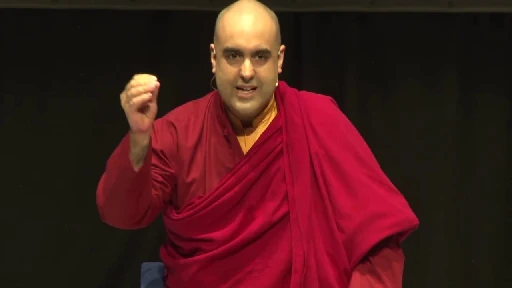
YouTube Video
Click to view this content.
This is a video I watched a while ago, but I remember enjoying it so thought I'd share it.
https://youtu.be/PYD-Gx_9K_M
- Shenhui vs. Shenxiu
cross-posted from: https://lemm.ee/post/2818869
> I found an interesting book, Zen's Chinese Heritage, The Masters and their Teachings by Andy Ferguson. It goes through the 1st twenty-five generations of Chan masters, beginning with Bodhidharma and ending with Foyan. > > The main source material for this book is the Wudeng Huiyuan (Compendium of Five Lamps), dating from the mid-1200s. This excerpt is about Shenhui, the student of Huineng, also the one believed to have written the Platform Sutra. > > >HEZE SHENHUI (670–762) was an eminent disciple of the Sixth Ancestor. He strongly supported and promoted Huineng’s place in Chinese Zen history. Shenhui championed the Southern school of Zen, and vociferously attacked what became widely known as the Northern school, the school associated with Yuquan Shenxiu. > > > >Shenhui put forward two reasons for his attack on the Northern school. The first was, “The (ancestral) succession is spurious.” Attacking Shenxiu’s legitimacy as the Dharma heir of Hongren was an extension of Shenhui’s proposition that that honor belonged exclusively to Huineng. Obviously, the argument was self-serving as well, since Shenhui could thus make a claim to be the true Seventh Ancestor of the Bodhidharma line. > > > >The second reason for attacking Shenxiu was, “(His) Dharma gate is gradual.” By this, Shenhui meant that the various “gradual” spiritual practices employed by Shenxiu, as well as other disciples of Hongren, were fundamentally at odds with what Shenhui regarded as the genuine Zen of his teacher, Huineng. > > > >Shenhui’s life and teaching are at the center of the most hotly debated questions of Zen history and thought. He is a controversial figure who set a standard of teaching that emphasized sudden, unmediated enlightenment. This characteristic of Chinese Zen distinguishes it from other Buddhist schools. The idea of nonmediated, sudden enlightenment clearly took solid root as a centerpiece of Chinese Zen during Shenhui’s era and suffused the teachings of > subsequent generations of the Southern school. > > > >Shenhui’s Zen, expounded in the name of the Sixth Ancestor, castigated the idea of “gradual” enlightenment achieved through meditation and religious practices that were meant to realize and maintain “pure original mind.” Shenhui’s proposition, in effect, attacked not only the Northern school, but many of the practices that were part and parcel of Daoxin and Hongren’s East Mountain Zen tradition as well, including their basic outlook on meditation practice. > > > >Scholars have documented that Daoxin, Hongren, and Hongren’s disciples variously used “gradualist” practices, practices that set religious life distinctly apart from secular life, in their practice centers. One example was Hongren’s disciple Zishou Zhishen, the founder of the Sichuan Zen school, who is believed to have heavily emphasized chanting Buddha’s name over all other practices. > > > >Yet Shenhui has been shown to have tampered with, not to say subverted, the historical facts surrounding Huineng’s life to gain ascendancy for his “sudden” Zen ideology. Shenhui’s account of Huineng’s life contains self-serving inconsistencies. Moreover, his writings about earlier Zen development, particularly the succession of Zen ancestors beginning with Shakyamuni Buddha, contain blatant errors and contradictions. > > > >The “Northern” school was the name applied by Shenhui to the most politically dominant and powerful stream of Zen of his era. This stream was a continuation of the East Mountain school of Hongren, as taught by his disciple Shenxiu, and by Shenxiu’s own many disciples who were spread through northern areas of the country. Shenxiu obtained unprecedented influence at the imperial court during the late seventh and early eighth centuries. Shenxiu’s disciples Puji and Yifu then carried on this influence until events overcame the school around the year 755. > > > >Shenhui’s main attack on the Northern school occurred at a conference he staged at Great Cloud Temple in Huatai in the year 734. In that meeting, Shenhui put forth the “Exposition on Determining Right and Wrong [with respect to] Bodhidharma’s Southern school.” The conference staged a debate between Shenhui and a certain “Dharma master Chongyuan,” who defended the Northern school. Although the influence of this conference on the imperial court and public opinion is disputed, the meeting clearly laid out lines of battle between the doctrines of the southern and northern currents of Zen. > > > >After the conference at Huatai, Shenhui proceeded to live in the northern capital city of Luoyang, where he directly confronted the Northern school by inciting opinion in public gatherings. Eventually, Shenhui was banned from Luoyang as a rabble-rouser. During the period of his banishment, historical events transpired that helped his cause. The An Lushan uprising, a catastrophically destructive rebellion against the Tang dynasty, led to the destruction of the twin capital cities of Luoyang and Changan. The areas suffering devastation were important regions of Northern school predominance. This direct destruction of the Northern school led to a vacuum of court influence that Shenhui’s followers managed to fill. Thus, the Southern school gained social and political ascendancy not simply due to a preferred religious doctrine, but as the unforeseen result of a civil war that wracked northern China during that era. > > > >Shenhui thus founded what became known as the Heze (in Japanese, Kataku) school of Zen. The branch largely died out during the early ninth century and is not remembered as a major school. Nevertheless, the doctrine of sudden enlightenment remained a central characteristic that defined the teaching styles and cultural flavor of later Chinese Zen. In the next Zen generation, Mazu Daoyi’s Hongzhou school vigorously adopted a teaching style that expressed the “sudden” Zen outlook. That school displaced Heze’s school in influence during the ninth century, but the doctrine espoused by Shenhui had lasting influence on all subsequent generations of Zen teachers. > > I've read elsewhere about more modern scholarship casting some doubt on Huineng, and the division of Northern/Southern schools. I think John McRae has written about it, but I'm going to have to search for some of his articles. > >
- Journal of Chan Buddhism Volume 1 Issue 1-2 (2019)brill.com Journal of Chan Buddhism Volume 1 Issue 1-2 (2019)
"Volume 1 (2019): Issue 1-2 (Dec 2020)" published on 22 Dec 2020 by Brill.

cross-posted from: https://lemm.ee/post/2593059
> I found some interesting articles from the Journal of Chan Buddhism. This is volume 1, there is a volume 2, but it's behind a paywall, or you can possibly get them if you have an institutional login... > > I've only read the Repositioning Xinxing 信行 (540–594) in the Chinese Meditation Tradition. It was interesting, but I've yet to find any more information on Xinxing, but it seems he was pretty early in the Chinese Chan record. > > Also I've been wanting to find more peer-reviewed journal articles on Chan, if anyone has any suggestions on where to look! > > >The peer-reviewed Journal of Chan Buddhism: East Asian and Global Perspectives is the first of its kind in English to specifically present academic research about Chinese Chan, Korean Sŏn, Vietnamese Thìên, and Japanese Zen Buddhism. The Journal of Chan Buddhism is an interdisciplinary or cross-disciplinary journal and will accept submissions from all academic disciplines related to the study of Chan/Sŏn/Zen Buddhism, including, but not limited to: the history of religions, literary studies, Dunhuang Chan studies, Tibetan and Tangut language Chan studies, doctrinal studies, art historical perspectives, institutional history, anthropological research, and comparative, philosophical studies. The journal also offers book reviews and translations into English of innovative research articles by eminent scholars in East Asia. The Journal of Chan Buddhism has separate area editors (e.g., Chan, Sŏn, Zen) to facilitate broad but still multifaceted coverage of Chinese Chan Studies, Korean Sŏn Studies, Vietnamese Thìên Studies, and Japanese Zen Studies. > > > >The journal is hosted by the Buddhist Studies Forum at the University of British Columbia (UBC), funded by the Tianzhu Charitable Foundation of Guangdong Province, China, and facilitated by a Social Sciences and Humanities Research Council (SSHRC) project on Buddhism and East Asian Religions (frogbear.org) at the University of British Columbia (UBC). >
- A quote for reflection
Who is the Knower that knows the world but cannot itself be known? Who is the Hearer that hears the birds but cannot itself be heard? Who is the Seer that sees the clouds but cannot itself be seen? — Ken Wilber
- A thought I had about rebirth
Brief disclaimer. I'm very new to Budhhism as a whole. I started listening to podcasts and reading sutras just over one month ago and I've been practing Zen since becoming interested. I guess I'm what would be called a "Buddhist observer".
Since becoming interested in buddhism, it has really spoken to me. Every aspect of resonates with me. Well every aspect except one that seems very core to Buddhism: The concept of rebirth. I've struggled with this concept as someone who is very non-spiritual and skeptical of something that I cannot observe personally or read trustworthy un-biased accounts of.
This morning while sitting zazen, an interesting thought occured to me. I know we are supposed to let thoughts go when sitting zazen, but I just couldnt seem to let this one go so I followed it through. What if rebirth is not being reborn in the physical sense nor the spiritual, but rather we are reborn through our friends and family, and those that we have some sort of impact on in our lifetime. When we die we still live in the memories of those that care about us, although their perception of us is a different us than what we saw ourselves as.
This seemed profound to me, so I decided to follow it further. If we are reborn in the memories of others, then part of ourselves is carried through to the individuals that they have an impact on. This would be an endless cycle of rebirth. Then I thought of the story of The Buddha recalling memories from all of his previous lives and realized one could interpret this as having insight into the memories of people that had a profound impact on them, and their memories, and so on.
The last connection that I could make to what I've learned of buddhism so far is the last of the five rememberences. "My only true possession is my actions.". The five rememberences is what really awed me about Buddhism to begin with and I realized that our actions are what people remember us by. Therefore our rebirths are a made purely from our actions.
I wonder if this could be taken further and what other links this idea could have to buddhism.
Im creating this post just because I want to see how others feel about this idea. I want to humble myself before those that have been practicing for many years so that I can learn. Thanks for reading!
- Seeing Beneath The Surface
“Hunger is the foremost illness; Determinations are the foremost dis-ease. For one knowing this, as it really is; Nibbāna is the foremost ease.” – Dhp 203
New essay on the seven perceptions of great fruit and benefit, by Ajahn Ñāṇamoli
- The Sandhinirmocana Sutra on the alayavijnanaread.84000.co Unraveling the Intent / 84000 Reading Room
In Unraveling the Intent, the Buddha gives a systematic overview of his three great cycles of teachings, which he refers to in this text as the “three Dharma wheels” (tridharmacakra). In the process of delineating the meaning of these doctrines, the Buddha unravels several difficult points regardi...
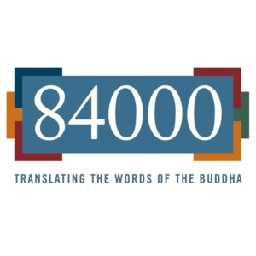
tl;dr: Up to five sense vijnanas can arise at a time, but only one mind vijnana arises at a time to cognize the object of those sense vijnanas. The alayavijnana is equated with the mind (citta).
___
From chapter 5 of the Samdhinirmocana Sutra:
“Viśālamati, when such and such beings are reborn and manifest in this saṃsāra comprised of six destinies, in any class of beings or state of birth, be it egg-born, womb-born, moisture-born, or spontaneously generated, there is first a twofold appropriation: the appropriation of the physical sense faculties together with their supports, and the appropriation of mental imprints producing the elaboration of conventional expressions with regard to phenomenal appearances, names, and conceptualizations. In dependence upon this twofold appropriation, the mind containing all the seeds matures, merges [with the embryo], grows, increases, and expands. This twofold appropriation occurs in the realm of form but it does not appear in the realm of the formless.
“Viśālamati, this cognition is also called ‘appropriating cognition’ because it grasps and appropriates the body. It is also called ‘subliminal cognition,’ (alaya-vijnana) because it dwells and lies hidden in this body, sharing a common destiny. It is also called ‘mind,’ because it is accumulated and developed by visual forms, sounds, smells, flavors, tangible objects, and phenomena.
“Viśālamati, taking this appropriating cognition as support and basis, the six kinds of cognition, that is, visual, auditive, olfactory, gustatory, tactile, and mental cognitions, arise. Among these, a visual cognition arises on the basis of the eye, which is connected with a visual cognition and a visual form. Simultaneously and in conformity with this visual cognition, a mental cognition that conceptualizes the object arises at the same time, having the same object. [Likewise,] Viśālamati, an auditive, olfactory, gustatory, or tactile cognition arises on the basis of a sense faculty connected to a cognition, such as the ear, nose, tongue, or body, and a sound, smell, flavor, or tangible object. Simultaneously and in conformity with this auditive, olfactory, gustatory, or tactile cognition, a mental cognition that conceptualizes the object arises at the same time, having the same object. If only one visual cognition arises at one time, then only one mental cognition that conceptualizes the object arises simultaneously, having the same object. If two, three, four, or five cognitions arise simultaneously, then also in that case, having the same object as the group of five cognitions, only one mental cognition that conceptualizes this object arises simultaneously.
“Viśālamati, it is like this: If the conditions for the arising of a single wave in a large stream of water are present, then only one wave arises. If the conditions for the arising of two or many waves are present, then two or many waves arise. However, the river [itself] neither stops as a stream of water nor becomes exhausted. If the conditions for the arising of a single reflection in a perfectly polished mirror are present, then only one reflection arises. If the conditions for the arising of two or many reflections are present, then two or many reflections arise. However, the mirror neither transforms itself into the object corresponding to the reflection nor manifests reflections by being in close contact [with the reflected objects]. Viśālamati, similarly, taking this appropriating cognition as support and basis, as in the examples of the river and the mirror, if the conditions for the arising of one visual cognition are present, then only one visual cognition arises. If the conditions for the simultaneous arising of up to five cognitions are present, then up to five cognitions simultaneously arise.
[...]
"Profound and subtle is the appropriating cognition. Containing all the seeds, it flows like a stream of water. I did not teach it to the immature, Lest they would imagine it to be a self."
- Our Inheritance

Our you carrying the weight of your ancestors or lightening the load?
Day 193 from Your One True Home by Tich Nhat Hanh
- Archaeologists Unearth Buddha Statue in Ancient Egyptian Port Citywww.smithsonianmag.com Archaeologists Unearth Buddha Statue in Ancient Egyptian Port City
The new find sheds light on the rich trade relationship between Rome and India
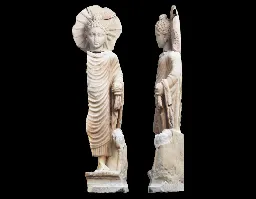
- First Cessation?
I started mediating and studying buddha-dharma when I was incarcerated in 2015 and sustained a daily mindfulness practice for three years or so.
I was released just before covid and my practice fell off during the pandemic.
Over the week leading up to father's day I had a breakdown and some of the mental health issues that got me arrested in 2015 resurfaced. At the tailend of the breakdown I put on a body scan and had taken a small dose of psilocybin. I had also been working with a Buddhist therapist who has mentioned something about resting in the space between the end of the outbreath and the beginning of the inbreath.
The bodyscan starts by anchoring to the breathing and I let my attention rest completely in the breathing. And as the guided meditation was finishing up I noticed a vibration, like a snore but in consciousness itself, this vibration. Coarse. And I understood this is dukkha. And in the next moment, at the bottom of the breath, there was a moment where this vibration was absent.
The birds were still singing. My body was still on the mat. But for a moment, the intense suffering I had been experiencing over the previous week, was completely absent. And the moment was most defined by this contrast.
I experimented with it over the course of the night and was able to repeat the experience. At the bottom and top of the breathing, but also right in the middle. And I could tell a difference between clinching (trying to make the skip happen by holding the breathing or holding the thinking) and finding the skip by being aware of and letting go of dukkha.
My therapist is on vacation right now so I haven't had a chance to ask her about it.
But I am curious for other people's thoughts or experiences.
Thanks
- What are your opinions are merit devices like Prayer Wheels?
I understand each person is going to have a different take on them and I’m curious to hear what yours maybe. It seems to be a very interesting practice.
- No matter how many years you meditate…
"As long as you conceive of yourself as being somebody who has to do something in order to become something else, you still get caught in a trap, a condition of mind as being a self, and you never quite understand anything properly. No matter how many years you meditate, you never really understand the teaching; it will always be just off the mark." – Ajahn Sumedho, 'Everything That Arises Passes Away' (from the book, 'The Way it is')
- Virtuous friends
"The sages praise virtuous friendship, when they speak about the world. By associating with virtuous friends, even a fool may become wise.
One should associate with good people, as that is how wisdom grows. If one associates with good people, one would be freed from all suffering."
-Kisā Gotamī (from the Therīgāthā)
- The mind is the ocean for a person
“The eye, bhikkhus, is the ocean for a person; its tide consists of forms. One who endures that tide consisting of forms is said to have crossed the ocean of the eye with its waves, whirlpools, sharks, and demons. Crossed over, gone beyond, the brahmin stands on high ground. The ear, bhikkhus, is the ocean for a person…. The mind is the ocean for a person; its tide consists of mental phenomena. One who endures that tide consisting of mental phenomena is said to have crossed the ocean of the mind with its waves, whirlpools, sharks, and demons. Crossed over, gone beyond, the brahmin stands on high ground.” - SN 35.228
- What is Buddhism? | Learn More About Buddhism | Buddhism For Beginnerstricycle.org What is Buddhism? | Learn More About Buddhism | Buddhism For Beginners
Buddhism is a religion based on the teachings of the Buddha—the title given to the Indian spiritual seeker Siddhartha Gautama more than 2,600 years ago.
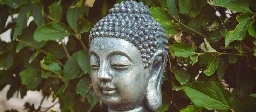
- Aversion to your own sensesbbballs.github.io 215hh- Mindfulness Of Breathing And Calming Of The Aversion · Hillside Hermitage Archive
This is an archive of dhamma talk recordings, summarized transcriptions, and essays by Ajahn Nyanamoli Thero on various topics of Buddhist meditation practice based on early suttas, mindfulness, and right view.
"If you overcome all sensuality and subdue all of the patigha that you have towards your own senses and towards anything or anyone in the world, present, past or future, then you will be ready to follow the Buddha’s detailed instructions on anapanasati."
- Contentment in the wholesome

YouTube Video
Click to view this content.
"As long as you're not finding contentment in wholesome phenomena it means you're still within the domain of sensuality, because one of the defining traits of sensuality is to expect things to provide you with pleasure or, rather, that pleasure is the result of things you're engaged with. But wholesome states don't work like that, which means you can stay with wholesome states all you want but they won't provide you with pleasure. You need to discern the contentment.
That's quite an important thing, but the practice of meditation usually revolves around replacing the pleasures you're used to with a new set of pleasures – more peaceful, more refined, but still expecting meditation to give you the pleasure back. You get the pleasure back only once you start discerning it on the basis of wholesome, and that pleasure is the pleasure that is not underlined by craving, which is the pleasure of sensuality, so having non-contentment in wholesome states means being still within the sensuality even if you're perfectly restrained.
It still belies the attitude of restrained in order to get more, the attitude of expecting things to do it to you.
You need to develop (contentment in wholesome phenomena) through that discernment of wholesome, the sensual seclusion, the sensual freedom – unless that's done it won't happen to you because whatever happens to you is going to be on account of sensuality."
Paraphrasing Ajahn Ñāṇamoli in 'Discussions From a Mountain Top #11':
https://www.youtube.com/watch?v=Jg4X-jHR9cw
- Buddhist Resources
Sutras
- 84000.co
- https://www.bdkamerica.org/tripitaka-list/
- http://www.cttbusa.org/sutratexts.asp
- https://sunnyvale.ctzen.org/wiki/dharma-gems/sutras-and-gathas/
- https://studybuddhism.com/
Communities
- c/buddhism
- c/zen
- c/alcoholicbuddhists
- c/zen
- c/theravada
- c/pureland
- c/tibetanbuddhism
- c/buddhiststudies
- c/vajrayana
- Good to see that there's a community for Buddhism!
I am anyway trying to reduce my screen time and time on Reddit, and the new changes they're making spurred me to check out Lemmy when I heard about it. I like the simple feel of it and hope that it will create smaller, tighter knitted communities, encourage individual posting (I never posted on Reddit but it feels more acceptable here somehow), and also help to further reduce my screen time.
I'm glad to see there's a Buddhist instance here. I think this may be the first or second post ever on this instance, so for the sake of encouraging conversation I would like to ask those who may see this post:
- What sect of Buddhism do you subscribe to? What do you like most about that sect?
- What is one way you have incorporated the teachings into your life recently, or one thing you would like to incorporate?
For me:
- Tibetan Buddhism (Gelug tradition). I like the fact that it purports that enlightenment can be achieved in just one lifetime; that negative karma can be purified; and that bad things happening is just our negative karma ripening, which means you are paying your karmic debt in those situations. It's very motivating for this lifetime.
- I am trying to be more mindful in everyday life because I don't meditate much at all, and I think mindfulness is the next best thing.
I hope this instance / community grows in the future!







